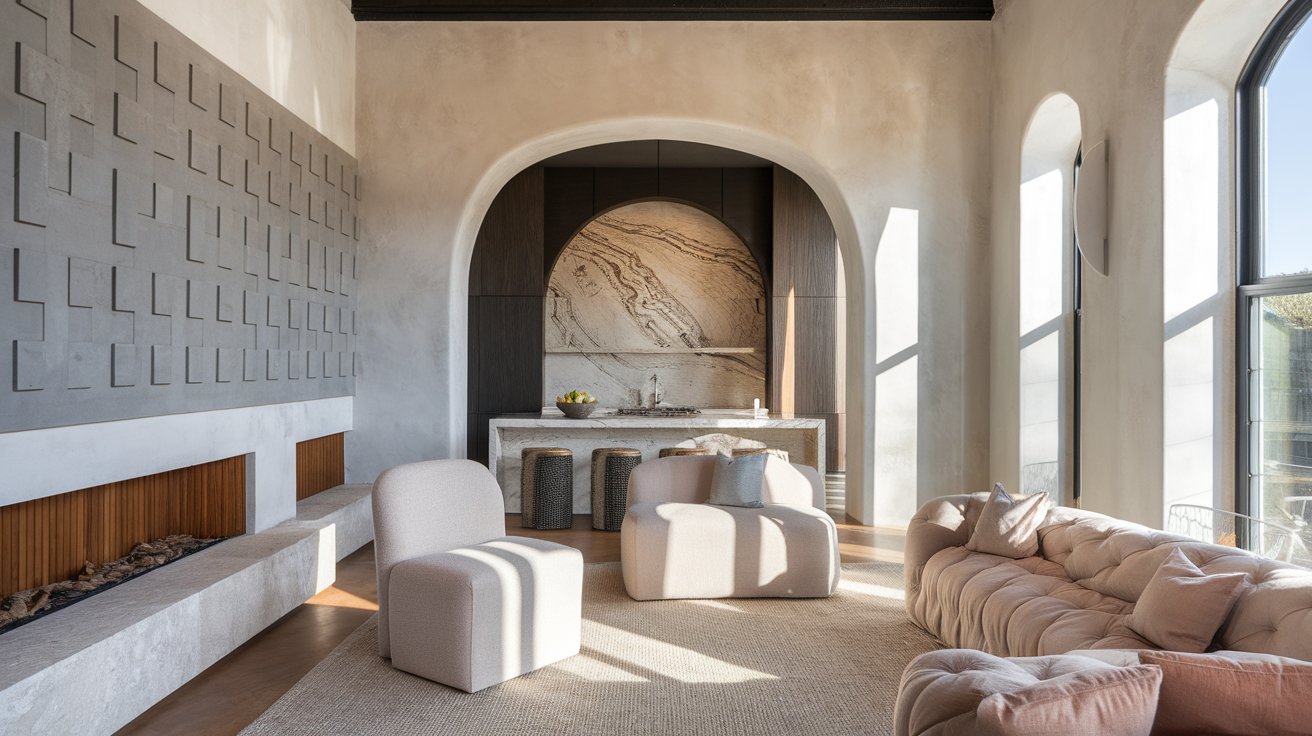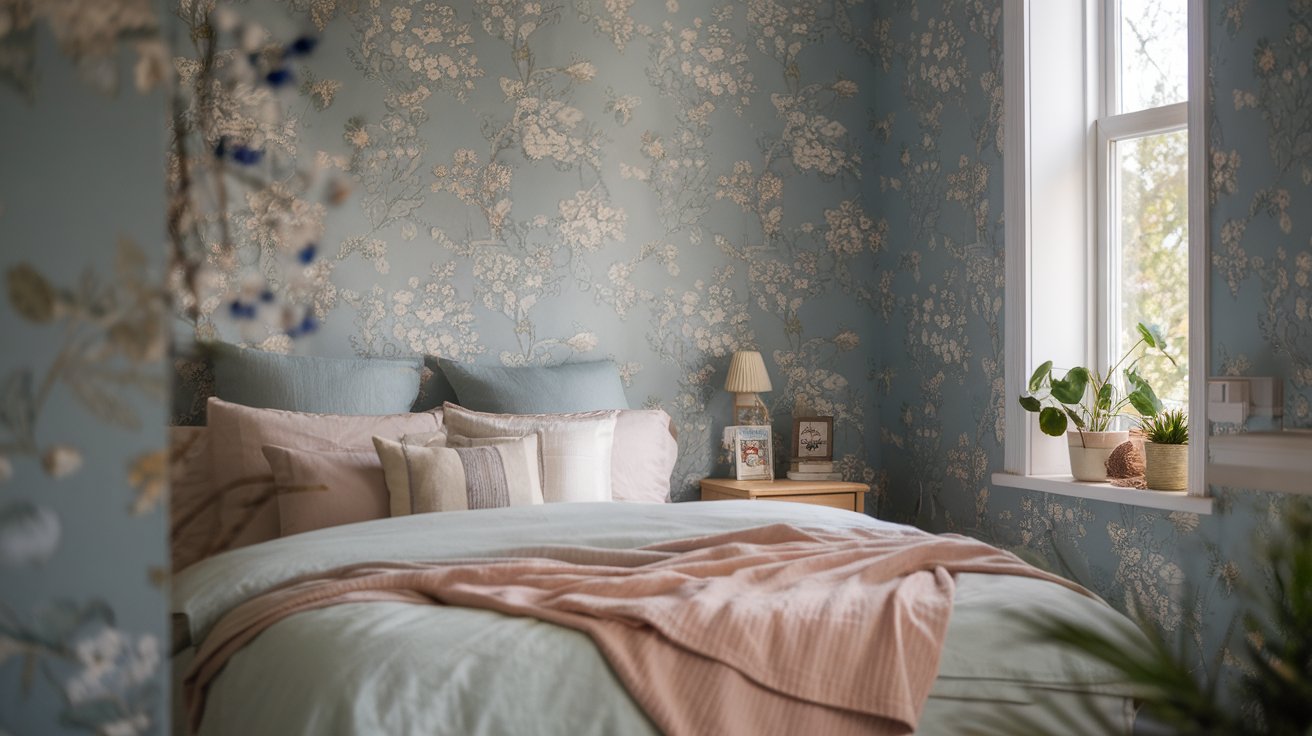Introduction
Wall paneling has become a versatile solution for homeowners seeking to elevate the design and functionality of their living spaces. Whether you’re aiming to create a rustic, modern, or classic look, wall paneling ideas such as wood paneling, wainscoting, and 3D wall designs offer endless possibilities. By choosing the right materials, like reclaimed wood or MDF, you can achieve a unique aesthetic that reflects your personal style while protecting your walls from everyday wear and tear.
From enhancing the texture of plain walls to providing a focal point for key rooms, wall paneling can transform your home. With careful planning and installation, it becomes not just a decorative choice but a practical one—helping you avoid common DIY mistakes and create a stunning, lasting effect.
Key Takeaways
- Wall paneling offers a versatile solution to elevate both design and functionality in any home.
- Popular paneling options include rustic wood, geometric patterns, and 3D designs for added texture and depth.
- Choosing the right materials, such as reclaimed wood or MDF, is essential for durability and achieving the desired aesthetic.
- Proper installation is critical—taking accurate measurements and using the right tools can help avoid common DIY mistakes.
- Wall paneling provides not only visual appeal but also protection against wear and tear, especially in high-traffic areas.
- Combining different paneling styles with modern lighting can enhance the overall ambiance and visual interest of a room.
Creative Wall Paneling Ideas for a Stunning Home

Wall paneling offers homeowners an exciting opportunity to elevate their interior design. From rustic wood to modern 3D wall paneling designs, the possibilities are endless. Rustic wood panels bring warmth and character to any room, while geometric wall paneling is a great way to add a contemporary flair with eye-catching patterns. Fluted wall panels, on the other hand, create a sense of luxury and sophistication. By blending different styles, such as reclaimed wood paneling with minimalist furniture, homeowners can achieve a unique and personalized aesthetic. For those looking for timeless charm, beadboard and cottage-style panels are excellent options. Also, adding decorative wall treatments or even a half wall can highlight specific areas like the fireplace or entryway, offering both functionality and style. Whether opting for solid wood or drywall solutions, wall paneling transforms spaces effortlessly.
Incorporating Rustic Wood Paneling into Modern Designs
Rustic wood paneling is a popular choice for adding warmth and texture to modern interiors. Its imperfections, like knots and grain patterns, bring character to a space, offering a charming contrast to clean, contemporary furniture. Homeowners often use rustic wood to create accent walls, which become focal points in rooms such as living areas or bedrooms. Pairing these panels with minimalist décor or sleek, modern lighting creates a balanced look that feels both inviting and sophisticated.
Creating Visual Interest with Geometric Wall Panels
Geometric wall panels add a dynamic element to interior spaces, using patterns like hexagons or triangles to create a visually engaging effect. Available in both 3D and flat designs, these panels offer depth and texture that can transform a room. For a more subtle look, homeowners might opt for nature-inspired geometric patterns. These designs often echo natural elements like flowers or leaves, infusing a touch of tranquility and organic appeal into the home.
Best Wall Paneling Options for Home Design
1. Rustic Wood Paneling
Rustic wood paneling is a top choice for homeowners who want to introduce natural warmth and character to their living spaces. Known for its imperfections, such as knots and grain patterns, this type of paneling creates a cozy, inviting atmosphere. It works well in both modern and traditional homes, offering a timeless look.
2. Geometric Wall Panels
Geometric wall panels are ideal for those seeking a bold and modern aesthetic. Featuring shapes like triangles and hexagons, these panels draw attention and add visual interest to any room. Available in both 3D and flat designs, they bring depth and movement to otherwise plain walls.
3. Fluted Wall Panels
Fluted wall panels are perfect for creating a sophisticated, upscale look. The vertical lines of the paneling elongate walls, making spaces appear taller and more spacious. Fluted panels are often used in bedrooms and living rooms, where their texture can be highlighted with soft, ambient lighting.
4. Wainscoting Panels
Wainscoting is a classic paneling style that combines elegance with practicality. Typically installed on the lower half of walls, it provides protection from scuffs while adding a decorative element. Wainscoting is particularly popular in entryways, dining rooms, and hallways.
5. 3D Wall Panels
For those looking to make a bold design statement, 3D wall panels are the way to go. These panels feature raised designs that create a unique texture, perfect for accent walls. They can transform any room into a visually engaging space, especially when paired with complementary lighting.
How to Choose the Right Wall Paneling Material

Selecting the right wall paneling material is key to both the functionality and design of your home. Reclaimed wood adds a rustic, eco-friendly touch, while MDF offers a smooth and cost-effective option. Faux wood panels provide a lightweight alternative that’s easy to install paneling for any DIY enthusiast. For a classic, timeless look, natural wood and farmhouse designs are perfect, especially when combined with cottage aesthetics. In contrast to wood, alternative materials like tile or even textured wallpaper can offer creative options for specific rooms. It’s important to consider factors such as durability, ease of installation, and the location where the paneling will be applied, ensuring the material suits both the purpose and space. Details like a groove finish can add to the aesthetic, especially when walls are carefully paneled to enhance the room’s charm.
Benefits of Reclaimed Wood Wall Paneling
Reclaimed wood offers an eco-friendly and durable option for wall paneling. It is made from repurposed materials, often sourced from old barns or factories, which gives each panel a unique character. The weathered look of reclaimed wood adds a rustic charm to any space, making it a perfect choice for homeowners seeking a vintage or industrial style. Additionally, reclaimed wood is incredibly durable and offers long-term sustainability, making it both an environmentally and financially wise choice.
MDF Panels: A Cost-Effective Wall Paneling Option
MDF (medium-density fiberboard) is a versatile and affordable material for wall paneling. Its smooth surface makes it easy to paint and customize, while its lightweight nature simplifies the installation process, making it a popular choice for DIY projects. Although MDF doesn’t have the natural grain patterns of wood, it can mimic the appearance of traditional wood paneling when painted. It’s an excellent option for homeowners looking to achieve a high-end look on a budget.
Case Study: Choosing the Right Wall Paneling Material for a Sustainable Home
In a recent home renovation project, a couple from Oregon faced the challenge of selecting the right wall paneling material for their eco-conscious home. They were torn between the aesthetic appeal of reclaimed wood and the affordability of MDF. Their goal was to balance sustainability with cost-efficiency without compromising the look they desired for their living room.
After thorough research and consultations with professionals, they decided on reclaimed wood for its environmental benefits and unique character. The reclaimed wood added a rustic charm while reducing the environmental impact of their project by repurposing existing materials. Despite a higher upfront cost compared to MDF, the couple felt confident that the long-term durability and sustainable benefits were worth the investment.
Installation Tips to Avoid Common DIY Mistakes

Installing wall panels can be a bit tricky, but if you follow the right steps, you’ll avoid costly mistakes. First off, make sure your measurements are spot on—always grab a tape measure and check twice. Whether you’re working on a feature wall or just the bottom portion of a wall, it’s important to use adhesive and levelers carefully to stop your panels from warping. Plus, wall paneling can create a polished look in your home, especially in rooms like bathrooms where bathroom wall paneling ideas suggest using moisture-resistant materials. Taking your time with prep work, especially if you’re going for a shiplap wall or board and batten design, will make a huge difference. Double-check your tools, and using painted or finished panels will give you a smooth, professional finish.
Preparing Walls for Paneling Installation
Before installing wall panels, it’s essential to prepare your walls properly to avoid mistakes. Start by cleaning the wall surface thoroughly and applying a primer. This will ensure that the panels adhere well and provide a smooth finish. Measuring the area is also crucial—accurate measurements prevent alignment issues, especially for patterned panels. Tools like a tape measure and leveler will help keep your installation straight and precise, ensuring a professional result.
Choosing the Right Adhesive for Paneling
Selecting the appropriate adhesive for your wall paneling is critical for a long-lasting installation. Different materials, like wood, MDF, or faux wood, may require specific adhesives for secure bonding. For heavier materials like natural wood, a strong construction adhesive is recommended, while lightweight MDF can often be installed using simpler adhesive solutions. Applying adhesive evenly and sparingly prevents excess glue from seeping out, preserving the clean lines of the paneling.
“The bitterness of poor quality remains long after the sweetness of low price is forgotten.” — Benjamin Franklin
Enhancing Home Aesthetics with Wall Paneling

Wall paneling is an excellent way to enhance the overall aesthetic of your home, adding texture, depth, and character to otherwise plain walls. Decorative styles such as wainscoting, shiplap, and 3D panels create striking focal points in living rooms, bedrooms, and hallways. Pairing textured panels with soft lighting further elevates the ambiance of a room, making it feel both cozy and visually engaging. Whether you’re going for a rustic, modern, or classic look, wall paneling can help you achieve a polished, professional design.
Using Wainscoting to Add Sophistication
Wainscoting is a classic wall paneling style that adds a touch of elegance to any room. It typically covers the lower portion of the wall and is often paired with a contrasting paint color above, creating a balanced and refined look. Wainscoting is commonly used in entryways, dining rooms, and hallways, where it provides both decorative appeal and protection against scuffs and damage. Its timeless design ensures that it complements a variety of interior styles, from traditional to modern.
Elevating Interiors with 3D Wall Panels
3D wall panels are a modern way to introduce texture and depth into interior spaces. These panels feature raised designs that can turn a flat wall into an artistic statement. Whether used as an accent wall or throughout a room, 3D panels are perfect for homeowners looking to create a unique, visually engaging environment. Popular in living rooms and bedrooms, these panels pair well with soft lighting to enhance the textures and create a warm, inviting atmosphere.
Conclusion
Wall paneling is more than just a design feature—it’s a powerful tool for transforming the aesthetic and functionality of your home. Whether you’re leaning toward the rustic charm of reclaimed wood, the sleek appeal of modern 3D panels, or the timeless sophistication of wainscoting, the right wall paneling can make all the difference. With proper planning and material selection, homeowners can create spaces that not only look beautiful but also stand the test of time.
By following expert installation tips and avoiding common DIY mistakes, you can achieve a professional finish that enhances the overall look and feel of your home. Wall paneling adds depth, texture, and personality to any room, making it a versatile choice for any design vision.






